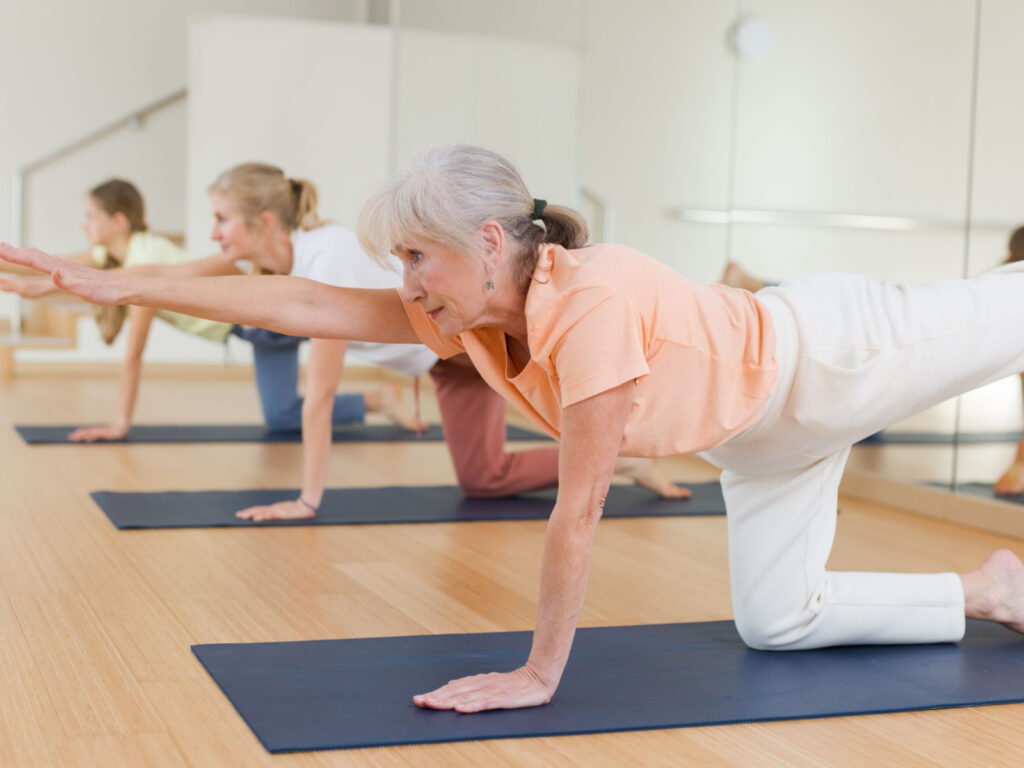Mobility Safety in Senior Living
Senior living facilities provide personal care services to support an active, meaningful lifestyle. Staying physically active is one of the best ways to manage your health needs at any age. Yet, independent movement can be challenging for seniors with mobility or health concerns.
So, what can seniors do to stay on their feet? What can residents and caregivers do to prevent falls in assisted living facilities?
Balance Exercises
Balance problems or disorders are more common in older adults, impacting almost 40% of seniors. Balance can be affected by balance disorders, health conditions, or medications. Balance affects coordination and stability, increasing the risk of injuries or falls. Furthermore, losing your balance frequently can be frightening, causing anxiety or a fear of falling.
Balance symptoms commonly include:
- Blurry vision
- Confusion or disorientation
- Dizziness or vertigo (a spinning sensation)
- Falling (or feeling likely to fall)
- Lightheadedness or a floating sensation
- Nausea or vomiting
Performing balance-enhancing activities is one of the best ways to prevent falls and improve independent mobility. Balance exercises are also one of the best types of exercise for seniors. In addition to other types of physical activity, the Centers for Disease Control and Prevention (CDC) recommends at least 3 days of balance-enhancing activities each week.
Balance physical therapy helps enhance joint mobility, strength, and posture. Preserving your balance supports your ability to be physically active and move independently. As a result, balance encourages active living and boosts confidence, supporting physical and mental health.
Performing balance activities can also support cognitive health, as improving balance can benefit memory, spatial cognition, and concentration.
Many assisted living facilities include balance-enhancing exercises as part of their fitness programming. There are also simple but effective balance exercises seniors can perform at home, such as:
- Heel-to-to raises — Stand with your feet hip-width apart. Then, raise your heels off the ground, balancing on the balls of your feet. Hold for 3 seconds, then shift your weight onto your heels, lifting your toes off the floor. Continue to shift your weight back and forth 20–30 times. You can use a walker, handrail, or sturdy furniture if you need support.
- Marching — Complete 20–30 repetitions of an exaggerated marching movement, raising your knee to waist height (or as high as comfortable) one leg at a time.
- Tightrope walking — Don’t worry if you’re afraid of heights; this tightrope can be any line on sturdy ground. Walk in a straight line with your arms out, carefully lifting your foot for 2–3 seconds between each step. The line length should allow you to take at least 30 steps.
- Weight shifts — Stand with feet hip-width apart and raise one foot at a time, holding for 30 seconds. Try this 3 times for each foot. If 30 seconds is challenging, try 10 seconds and slowly increase the amount over time when you feel more comfortable.
Core exercises and activities to strengthen joint flexibility also benefit balance. Yoga (including chair yoga) and pilates are popular options; you don’t need expensive equipment to make the most of the movements. Walking is another free exercise with multiple benefits, including practicing your balance skills.
Limiting Clutter
Personalizing your living space can make a place a home. You might have memories attached to furniture or items. But you might need to declutter when your treasure trove becomes a tripping hazard.
Oversized items, untidy surroundings, or uneven surfaces can make movement challenging. For example, your clothing might get caught and pull you back. Or you might need to squeeze between a tight space, causing you to shift your weight or lose your balance.
Most shared rooms in senior living facilities will have protocols about how much space is needed between furniture or objects. They’re responsible for the health and safety of the entire community, so they prioritize safe and practical design. But you’ll likely have more wiggle room to choose how to decorate your personal space.
Intelligent Design
Assisted living facilities provide programming and care services to support residents, but they’re also designed with mobility needs in mind. Staff assess physical capability and provide recommendations or mobility aids when needed. But the areas inside the facility also support physical health with intelligent design.
Limiting clutter in shared facilities is crucial, but there are additional steps assisted living facilities can take. For example, hallways may have handrails on both sides.
Caregivers and staff are available 24/7, so there’s always someone available if a fall happens. Additionally, they receive fall prevention training to reduce fall risks and learn how to respond to prevent accidents.
Life in Balance
Keeping steady on your feet is easier when you have resources you can count on—like personal care services, an exercise buddy, or a community walking group.
The Lodge at Truitt Homestead strives to provide seniors with the opportunities and amenities to live on their terms. Living a balanced life means access to many possibilities, whether you enjoy a relaxing day at home or embark on an exciting outing.
Contact us today or book a tour if you have questions about how a senior living community could benefit you. We can’t wait to welcome you to the Lodge Family!





